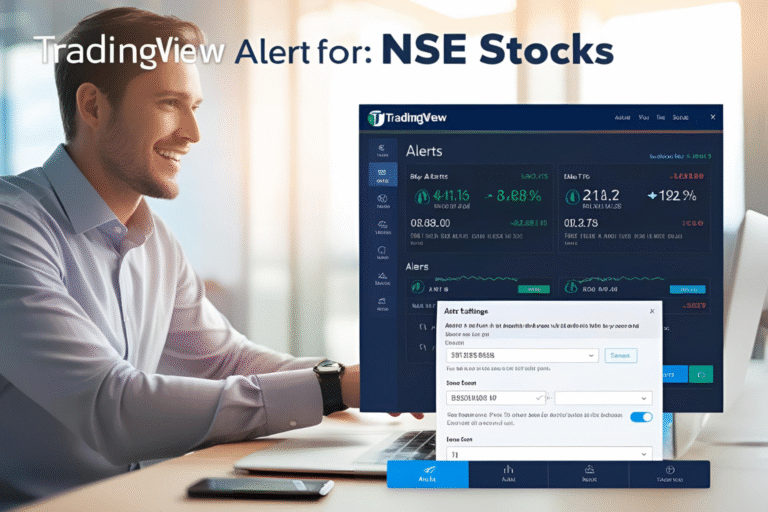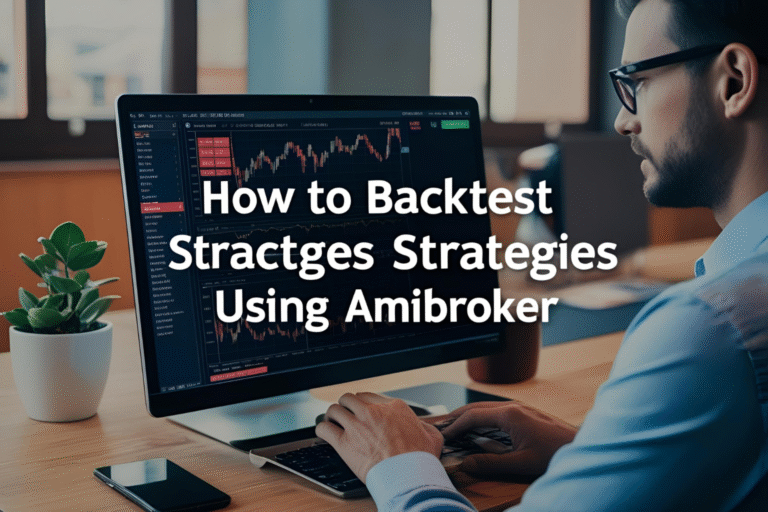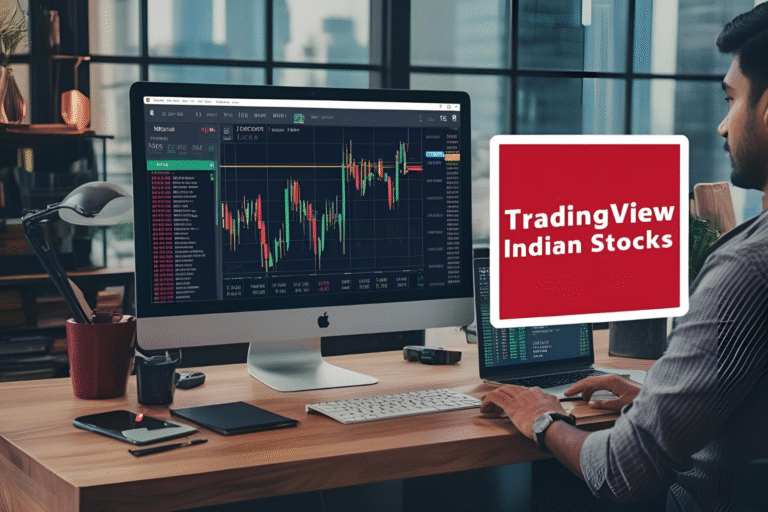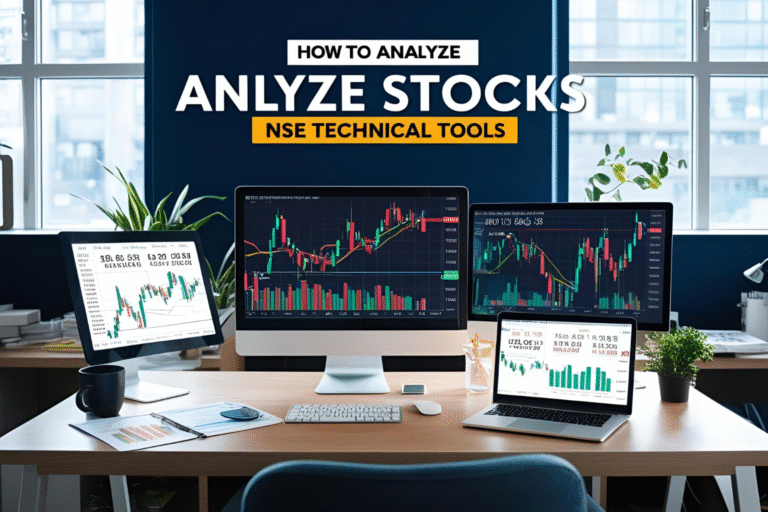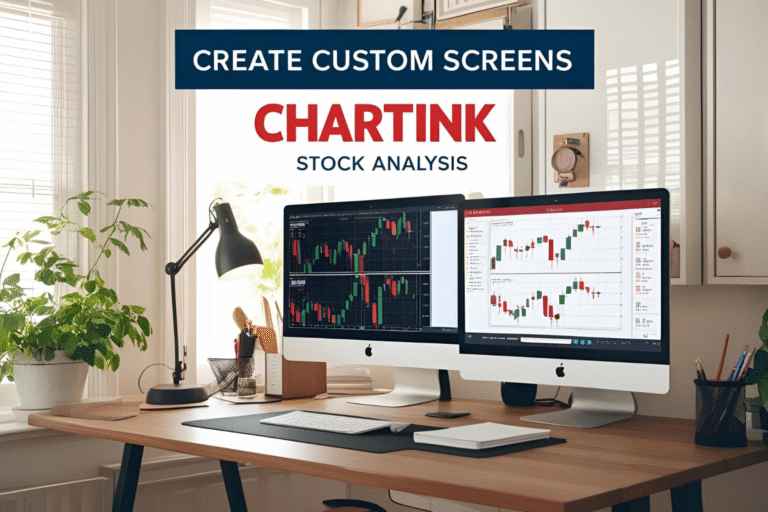How to Do Intraday Analysis with Software
Intraday trading requires speed, precision, and reliable data. Unlike positional trading, decisions in intraday setups are made within minutes to hours—making it essential to have the right analysis tools and workflows in place.
In this guide, we’ll cover how to do intraday analysis using software, with practical steps, tools, and tips tailored for Indian stock traders.
Step 1: Choose a Suitable Platform for Intraday Analysis
Your software should offer:
- Real-time or near real-time data
- Fast chart rendering
- Quick access to screeners and alerts
- Order integration (optional)
Recommended Platforms for India:
- TradingView – Real-time charts + indicators
- Chartink (Premium) – Real-time NSE screening
- Zerodha Kite / Upstox Pro / Dhan – Broker-integrated analysis + trading
- Amibroker – Advanced strategy backtesting with data feeds
- Spider IRIS+ – Real-time tick data + signal generation
Step 2: Select the Right Timeframes
Intraday analysis typically relies on shorter timeframes:
| Strategy Type | Recommended Timeframes |
|---|---|
| Scalping | 1-minute, 3-minute, 5-minute |
| Momentum Trading | 5-minute, 15-minute |
| Breakout Trading | 15-minute, 30-minute, 1-hour |
Use a multi-timeframe approach (e.g., 5-min + 15-min + 1-hour) to confirm signals across views.
Step 3: Apply Intraday Indicators
Popular Indicators for Intraday Traders:
- VWAP – Ideal for judging institutional average price
- EMA (9, 20, 50) – Used for trend direction and crossover setups
- Supertrend – Helps identify trend shifts
- RSI – Momentum indicator for overbought/oversold signals
- Volume – Confirms breakout validity
Tip: Don’t overload your chart. Use 2–3 indicators that complement each other.
Step 4: Identify Support and Resistance Zones
Support and resistance are critical for:
- Entry/exit levels
- Placing stop-loss orders
- Avoiding false breakouts
Tools to Use:
- Horizontal lines and zones
- Pivot Points (especially for Nifty and Bank Nifty)
- VWAP and Moving Averages as dynamic support/resistance
Step 5: Screen Stocks with Intraday Potential
Use screeners to filter stocks with:
- High volume breakout
- Narrow range consolidation
- Price crossing key EMAs
- Strong RSI or Supertrend signals
Tools:
- Chartink Premium – Real-time filters like “Price crossed VWAP with volume surge”
- TradingView Screener – Filter stocks based on technical setups
- Broker Terminals – Custom watchlists, sectoral heatmaps
Step 6: Set Alerts for Entry Triggers
Alerts help you react quickly without staring at screens all day.
Platforms that support alerts:
- TradingView – Price/indicator alerts (1 for free users)
- Chartink Premium – Alerts via SMS, email, and app
- Broker Apps – Watchlist-based alerts
Use alerts to catch:
- Price crossing resistance
- RSI crossing over 60 or under 40
- Volume spikes above average
Step 7: Monitor Price Action Before Entry
Before you enter a trade, always confirm with:
- Candlestick patterns (engulfing, pin bar, inside bar)
- Volume confirmation
- No immediate resistance/support nearby
Use a risk-reward ratio of at least 1:1.5 and pre-define your stop-loss and target before entering the trade.
Step 8: Use Software for Trade Execution (Optional)
If your software integrates with your broker:
- You can place trades directly from the chart
- Use bracket orders with predefined SL and Target
- Fast execution during breakout moments
Platforms that support this:
- Zerodha Kite
- Upstox Pro
- Dhan (via TradingView)
- FYERS One
Final Thoughts
Intraday analysis is fast-paced and software-driven. With the right tools and a disciplined approach, you can turn data into decisions within minutes.
Your software should help you:
- Spot high-potential trades
- Avoid false signals
- Act quickly with real-time data
Start with free tools and move to premium real-time platforms as your trading volume and need for accuracy increase.
FAQs
Q1: Which software is best for intraday traders in India?
A: TradingView (with broker), Chartink Premium, and Zerodha Kite are the most used tools among Indian traders.
Q2: Can I use free software for intraday analysis?
A: Yes, but free tools often have delayed data. Real-time analysis needs premium or broker-integrated platforms.
Q3: What is the most important indicator for intraday trading?
A: VWAP and EMA (9/20) are widely used along with volume for confirmation.
Q4: How do I find stocks to trade intraday?
A: Use screeners like Chartink or broker watchlists to filter for high volume, breakout, or trending stocks.
Q5: Should I rely on software signals completely?
A: No. Use signals as guidance, but confirm with price action, volume, and basic market context.


